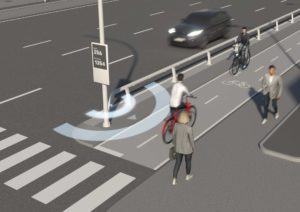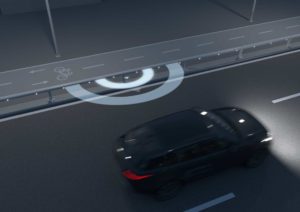Like every year, the third week of May marks the United Nations World Road Safety Week, an event that wants to put in the spotlight the various dangers that exist on the roads to create awareness, thus serving as a loudspeaker for developing regulations that help reduce incidents and save lives.
Last year, a campaign was launched under the slogan #StreetsForLife #Love30. The goal was to create residential urban areas with a speed limit of 30km/h, thus contributing to make cities safer, more ecological and suitable for different mobility models, vehicles, scooters, bicycles and VMPs.

This was the first of many campaigns that have been planned as part of the Decade of Action for Road Safety 2021-2030. This action plan is part of the 2030 Agenda for Sustainable Development, a worldwide voluntary action plan agreed upon by the Member States of the United Nations to protect the planet and all of us who inhabit it, and which seeks, among many other sustainability objectives, to be able to prevent at least 50% of traffic accidents by 2030.
This is more urgent than ever because recent studies speak out about worrying trends. According to Fundación Linea Directa, “the urban accident rate among vulnerable users could worsen, causing up to 5,500 deaths in Spanish cities by 2030, which represents an annual increase of between 30 and 50%”. Among the main arguments that the study exposes are the massive deployment of bike lanes in urban environments, the popularity of VMPs, or the lack of social awareness of sustainable mobility.

The new models of urban mobility, a new need
Within the objectives of the 2030 Agenda, special emphasis is placed on the concept of Sustainable Cities: large human settlements in which resource consumption is sustainable without harming air quality. This is why in recent years awareness campaigns have been designed towards more sustainable mobility inside and outside urban areas with the creation of Low Emission Zones and the expansion of pedestrian and bicycle lanes.
With all this, new means of personal mobility have emerged and regulations have become obsolete or have had to be adapted, thus giving rise to new needs in road safety systems.
First approved parapet with active safety
Metalesa’s mission is to protect people, it is to save lives. Uniting this purpose with this context of new mobility in urban environments, the idea arose of creating the new Metaurban® SMART, the first parapet with active road safety, that is, it not only passively waits to contain an accident, but also prevents these happen through intelligent signage.
The development of this new product responds to society’s growing need to have approved products as a guarantee of quality for urban and peri-urban areas, while taking advantage of new technologies and the deployment of 5G communications to bring containment to a new dimension as smart products.


It is a system fully aligned with the new trends in infrastructure management: security, sustainability and connectivity.
- It guarantees safety because it has been tested on a real scale as certified by the CE marking.
- It promotes sustainable mobility by making the new infrastructures in cities safer and friendlier.
- It is connectable because it integrates PLUG&META® technology, which not only waits for the accident to happen, but also identifies risk situations, and acts by alerting road users through signalling, minimizing the probability that these accidents will happen. Up to 10 functional scenarios have been developed, for example, accident warning, pedestrian presence, excessive speed, traffic jams, or bad visibility warning, among others.
It is a totally innovative parapet because, as can be seen, in addition to containing it in the event of an accident, it prevents these from happening, and also collects data and informs the municipal authority of all those events that are desired, from quality data of air, counting or multiple statistics of events detected by the sensors incorporated in the parapet.
The system is modular, in such a way that SMART technology can be incorporated only in that section where there really is a special need, and the rest can be a traditional containment system that is 100% safe before leaving the track.
And all of this can be managed remotely thanks to the management platform accessible from any device.
In this way, a traditional containment system has evolved into a new traffic management and urban mobility and information service for the city.
The Metaurban® SMART parapet represents a breakthrough in the urban equipment sector, prompting the imagination of how the IoT can transform static elements into active digital members of the smart city ecosystem.
Our goal is to improve people’s quality of life, focusing our efforts on offering a range of technologically advanced security and protection solutions. If you want to know a little more about this technology, visit our new microsite.
